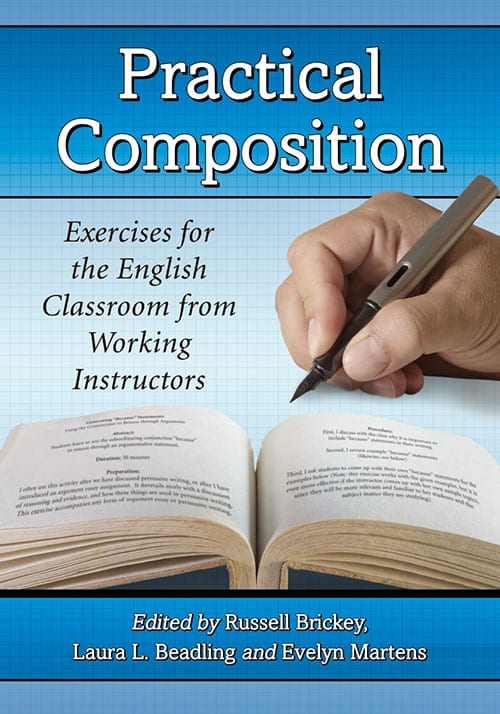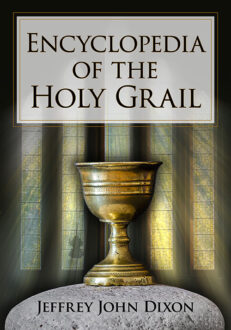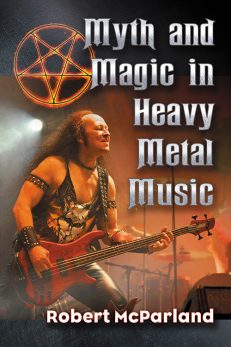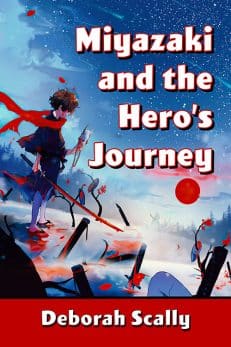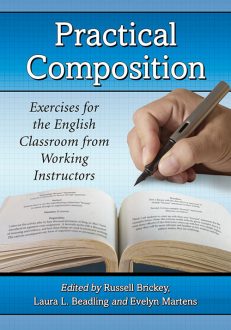Practical Composition
Exercises for the English Classroom from Working Instructors
$29.95
In stock
About the Book
For English instructors at every level, the task of producing a worthwhile, workable plan for each class period can prove challenging. This invaluable work offers a vast compilation of writing exercises and in-class activities collected from professors, graduate students and lecturers from colleges and universities across the United States. Step-by-step instructions guide teachers through class discussions and exercises on topics ranging from invention, argumentation, formatting, thesis development and organization to rhetorical situation, visual rhetoric, peer review and revision. From high school teachers and first-time teaching assistants to experienced writing professors looking to enhance their courses, anyone who teaches English will appreciate the fresh ideas found in this indispensable volume.
Instructors considering this book for use in a course may request an examination copy here.
About the Author(s)
Bibliographic Details
Edited by Russell Brickey, Laura L. Beadling and Evelyn Martens
Format: softcover (7 x 10)
Pages: 248
Bibliographic Info: index
Copyright Date: 2014
pISBN: 978-0-7864-7696-1
eISBN: 978-1-4766-1547-9
Imprint: McFarland
Table of Contents
Preface 1
How to Use This Book 3
Argumentation, Research and Analysis
Generating “Because” Statements: Using the Conjunction to Reason Through Arguments (Becky Adnot-Haynes) 7
Finding That Weak Link: Supporting an Argument Exercise (Laura L. Beadling) 8
Meat Eaters’ Manifesto: Research and Argue the Politics of Consumption (Russell Brickey) 9
Analyzing Creative Sources: Moving from Emotional Response to Critical Analysis (Rita D. Costello and William Lusk Coppage) 14
“Patriotism”: Four Definition Exercises (Rita D. Costello) 16
An Essay That Bridges Narrative with Research (Christine Cucciarre) 19
Investigative Research Essay: Exploring Local Issues (Melissa Dennihy) 20
Argument Analysis and Evaluation Essay (Martin J. Fashbaugh) 24
Argumentation and Logical Fallacies: Headlines as Inductive and Deductive Examples (J.D. Isip) 25
Assignment Sheet: Literacy Analysis Assignment (Tessa Mellas) 27
Special Issue: Collaborative Writing and Editing to Produce an Academic Journal (Lauren Matus) 28
Narrowing the Argument: Finding a “Researchable” Topic (Lauren Matus) 29
Underlining the Plot: Using Movie Clips to Teach Analysis (Alexandra Oxner) 31
A Trip to McDonald’s: An Introduction to Basic Research and Argument (Dana Washington) 32
Audience and Mode
Essay Exam Exercise: Practicing Taking an In-Class Test (Laura L. Beadling) 41
What People Are Seeing: A Lesson on Composing for Diverse Audiences (Christina Boyles) 43
Code Switching: Appropriate Language, Situation, and Email Etiquette (Rita D. Costello) 45
Letter to My Body: An Exercise in Poetry (Gerardo Del Guercio) 47
From Written to Oral: Using a Venn Diagram to Teach Modality (Josh Herron) 48
Using Twitter in the Composition Class: Writing Collaboratively Through Digital Technology (Josh Herron) 50
Narrative Structure of Storytelling: Using Freytag’s Triangle to Teach Audience (J.D. Isip) 52
Class Database Project: Extended Project on Writing Presentations (Denise Landrum-Geyer) 55
The Art of Incorporating Sources and Discussion of “Slant” in Writing (Debra Rudder Lohe) 61
“Where in the Heck Is Matt?”: Evaluating Global Cultures Project and Writing “Context” Papers (Lauren Matus) 63
“Post-Secret” Rhetorical Analysis: Knowing Your Audience (Alexandra Oxner) 64
Bibliography and Citation Style
In-Text Citations Exercise: Working Through Incorrect MLA Citations to Learn Style (Becky Adnot-Haynes) 69
A Works Cited Group Exercise (Rita D. Costello) 70
Constructing a Works Cited Page: For Group Work or Homework (Rita D. Costello) 72
Annotated Bibliography and Beyond: In-Class Critique and Development (Roslyn Reso Foy) 79
Avoiding Plagiarism: Integrating and Citing Sources (Debra Rudder Lohe) 83
Citing Together: Plagiarism and Source Exercise (Ben P. Robertson) 85
Idea and Thesis Generation
Silent Discussion: Method for Generating Class Discussion (Laura L. Beadling) 91
Creating Personal Profiles: Five Prompts for Developing Persona (DeMisty Bellinger-Delfeld) 92
From Topic to Position: A Thesis Statement Exercise (Rita D. Costello) 93
From Image to Thesis: Description and Observation Exercise (Martin J. Fashbaugh) 95
Liberating the Conversation at the Start: Narrative Freewriting Exercise (Martin J. Fashbaugh) 96
Moving Beyond Summary: Ten Prompts for Critical Reading and Analytical Writing (Priscilla Glanville) 97
Introducing the Conclusion: Writing the Final Paragraph to Focus the Opening Thesis (John P. Hazen) 102
Journaling the Headlines: Finding Paper Topics in the News (Kathleen Maloney) 103
Jump-Start Your Introduction: A Getting-Started Checklist (Christine Photinos) 104
“Complainstorming”: Brainstorming with Complaints (Nichole E. Stanford) 106
Grab Bag: Free-Writing Order Out of Chaos (Beth Walker) 107
Following “The Black Cat”: A Descriptive Essay Assignment (Dennis A. Yommer, Jr.) 110
Language Usage and Grammar
Teaching Spelling, Grammar, Punctuation and Citation Through Unintentionally Humorous (Anonymous) Student Errors (Svetlana Bochman) 115
Mapping Language: A Metadiscourse Exercise (Christine Cucciarre) 115
Digital Diagramming: Adapting a Tried and True Pedagogy to a Digital Environment (Mary Lynne Gasaway Hill) 117
Practical Punctuation: Applying Grammar Rules in Context (Laura Beadling and Russell Brickey) 122
Meaningful Text Assignment: Short Paragraphs Explaining the Importance of Writing (Lauren Matus) 123
Making Connections Between “Like” and “Dislike”: Effective Transitions (Alexandra Oxner) 124
Your? You’re? There? Their?: Spelling Exercise (Christine Photinos) 125
When Ethos, Pathos and Logos Are a Crime: Rhetoric Scene Investigation (Gary Vaughn) 127
Organization
Division and Classification Exercises: Learning the Process of Classification (Rita D. Costello) 131
The Paragraph Game: A Collaborative Game to Teach Paragraph Structure (Francesco Crocco) 132
Structure as Shape: Using Poetry to Teach Reader Response (Chad Engbers) 134
Descriptive Outlining, or Fun with Post-Its: Students Learn Essay Reorganization (Kathleen Maloney) 137
Deciding Their Own Fates: Facilitating Student-Created Rubrics (Chelsea R. Swick) 138
“Trimming” the Information: Reassembling Student Papers with Scissors and Tape (Virginia Tucker) 140
Peer Review
Double Take Peer Review: Checking Revisions Between Drafts One and Two (Mary Jo McCloskey) 143
Three Versions of Peer Review: Worksheets for the Classroom (Mike Farmer) 145
Peer Review Postings: Understanding Organization from the Reader’s Perspective (Brianne Howard) 152
Reflection Roundtable: Students Evaluate Their Writing Experience (Afaf (Effat) Jamil Khogeer) 154
Linguistic Exfoliation: Student Writing Self-Evaluation (Debra Rudder Lohe) 157
Six Peer Review Strategies: Prompts for In-Class Review (Tessa Mellas) 160
Visualizing Causality: A Peer Review and Poster Exercise (Lori Mumpower) 161
Composition Exercise Text: Peer Review Exercises (Abigail G. Scheg) 164
Alone in a Crowd: An (Anonymous) Peer Review Process (Chelsea R. Swick) 166
Revision
Revision in Practice: Review and Rewriting Intros in Class (DeMisty Bellinger-Delfeld) 171
Lessons in Revision with the Beatles and the Declaration of Independence (Rita D. Costello) 172
Kick Ass Paragraphs: Using Stronger Language to Bring Writing to Life (Tessa Mellas) 175
A Spatial Approach to Style: Using Tag Clouds for Revision in Narrative Writing (Kristin Mock) 177
Thinking Like an Editor: Revising Across Media (Martha A. Webber) 180
Genre Bending: Teaching the Radical Revision/Multimedia Project (Alexandra Oxner and Geoff Bouvier) 182
Writing Process and Paraphrase
The Letters to the Editor Exercise: Teaching Aristotle’s Rhetorical Triangle (Leslie Batty) 189
Creating Tailor-Made Handouts (Homework) (Laura L. Beadling) 192
Exhaust All Questions: Interrogating a Topic (Rita D. Costello and William Lusk Coppage) 193
Show, Don’t Tell: A Description Exercise (Rita D. Costello) 195
Cultural Literacy vs. Personal Literacy: Using Lists as Evaluation (J.D. Isip) 197
Direct, Indirect and Impressionistic: Crafting Good Essay Openers (Debra Rudder Lohe) 200
Summary the Second Time Around: Forging the Reading-Writing Connection (Joseph McCarty) 202
Interactive Lecture/Practice: Sentence Cohesion and Paragraph Development (Maria L. Soriano) 204
Paraphrase to Avoid Plagiarism: Diagnostic and Assessment (Rick Williams) 206
Composing Comics: Writing Description and Dialogue (Dennis A. Yommer, Jr.) 209
Visual Rhetoric
A Picture Is Worth a Thousand Words: Arguing from Close Observation of a Photograph (Catherine Gubernatis Dannen) 213
Reading the Magazine Ad: Ethos, Pathos and Logos Group Activity (Martin J. Fashbaugh) 215
Visual Analysis Warm-Up: Learning Cultural Influences Through Imaginary Advertisement (Becky Adnot-Haynes) 215
Their Own Visual Rhetoric: Using Student Photographs to Teach Ethos, Pathos, Logos (Courtney Hitson) 217
Assignment: Photo Essay (Fred Johnson) 218
Assignment: Critical Analysis of a Documentary Film (Fred Johnson) 224
Reading the Opening Credit Sequence: Visual Analysis Assignment Sheet (Tessa Mellas) 230
About the Contributors 233
Index 235

